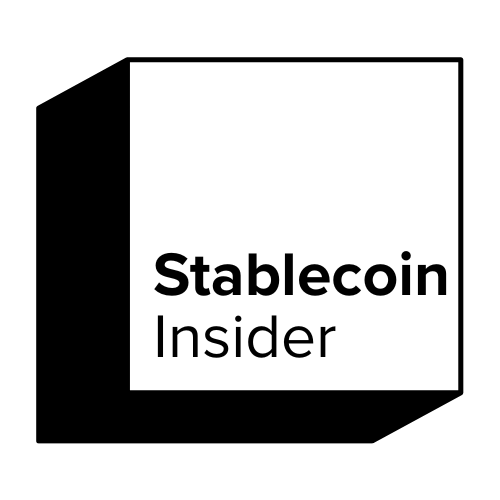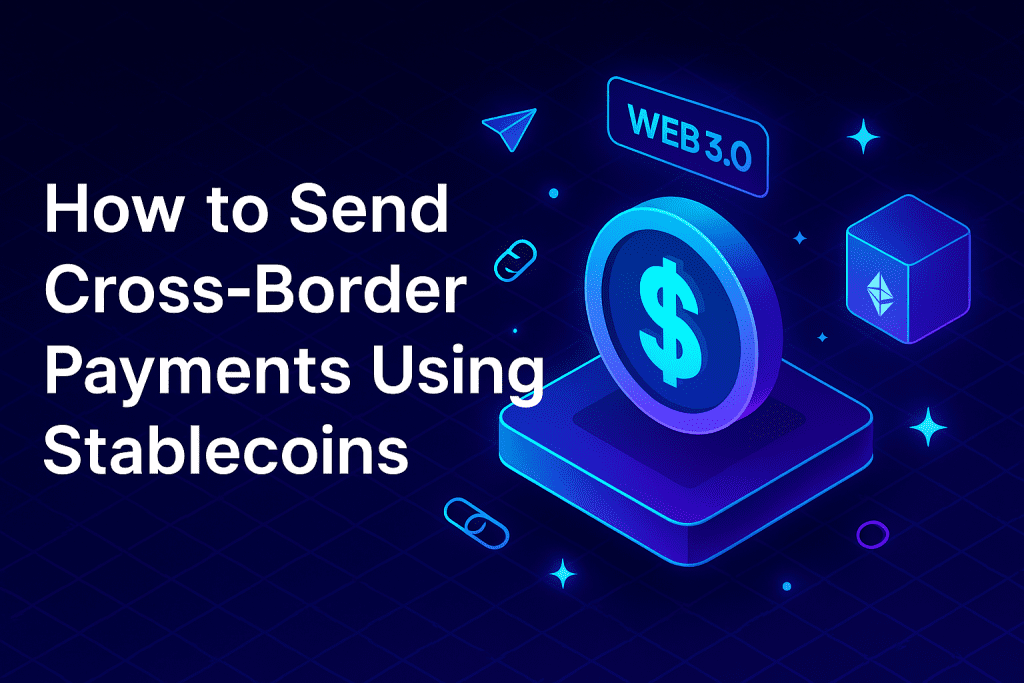In an increasingly globalized economy, sending money across borders is a common necessity for businesses and individuals alike. Traditional methods, like SWIFT, are often slow, expensive, and lack transparency.
Enter stablecoins – a crypto-based solution that offers faster, cheaper, and more efficient cross-border payments.
Key Takeaways
- Stablecoins are digital assets pegged to fiat currencies, offering stability and fast settlement.
- They provide an efficient alternative to traditional bank wires and SWIFT transfers.
- Sending payments with stablecoins can take minutes rather than days.
What Are Stablecoins?
Stablecoins are cryptocurrencies designed to maintain a stable value by being pegged to a reserve asset like the US Dollar or Euro. Unlike Bitcoin or Ethereum, which experience large price swings, stablecoins offer predictability and trust. This makes them ideal for sending payments across borders.
Types of Stablecoins
- Fiat-backed: e.g., USDC, USDT – backed 1:1 with fiat currency.
- Crypto-backed: e.g., DAI – backed by crypto collateral.
- Algorithmic: Adjust supply algorithmically to maintain peg.
Why Use Stablecoins for Cross-Border Payments?
Stablecoins are revolutionizing how international payments are made by removing many of the barriers that traditional systems like SWIFT still face.
Conventional transfers can take several days to clear and often involve intermediary banks that add fees and delays. With stablecoins, users enjoy near-instant transfers that are low-cost and available to anyone with an internet connection.
Unlike banks, blockchain-based stablecoin transfers are not limited by business hours or borders. You can send money from New York to Lagos or from Berlin to Manila in just minutes. This makes stablecoins a valuable tool for global commerce, freelancing, remittances, and more.
Benefits
- Speed: Stablecoin transactions typically take minutes to settle, even on weekends and holidays, thanks to 24/7 blockchain operation.
- Cost: Most blockchain networks charge just a few cents per transaction, avoiding the hefty fees and hidden charges of banks and remittance providers.
- Accessibility: Users only need a smartphone and internet access to participate, making it ideal for unbanked or underbanked populations.
- Transparency: Every transaction is recorded on a public ledger, allowing both sender and receiver to verify payments in real-time without relying on banks.
How Stablecoin Payments Work (Simplified Flow)
Stablecoin transfers follow a simple yet secure process. By leveraging blockchain networks, they remove many of the inefficiencies found in traditional banking systems. Here’s how it works:
Payment Flow
- The sender purchases stablecoins using fiat money or other crypto.
- The sender transfers the stablecoins to the recipient’s crypto wallet.
- The recipient either holds the stablecoins or converts them to local currency.
Popular Networks Used
- Ethereum (ERC-20)
- Solana (SPL)
- Tron (TRC-20)
How to Send Cross-Border Payments Using Stablecoins
Sending stablecoin payments internationally is straightforward if you follow a few simple steps. In this section, we walk through each stage of the process. From choosing a coin to verifying receipt, you’ll learn how to complete a secure and fast transaction.
Choose a Stablecoin
Select a stablecoin that meets your needs in terms of speed, fees, and platform support.
- USDC is known for its transparency and regulatory oversight.
- USDT is widely accepted and available on multiple networks.
- DAI is decentralized and crypto-backed.
Set Up a Crypto Wallet
You’ll need a wallet to send and receive stablecoins. You can choose between custodial wallets (hosted by exchanges) or non-custodial wallets (you control the keys).
- Examples: MetaMask, Trust Wallet, Coinbase Wallet
- Always enable two-factor authentication for security.
Acquire Stablecoins
Stablecoins can be purchased through crypto exchanges or received from another wallet. Make sure to use a reliable exchange with fiat onramps like Coinbase, Binance, or Kraken.
Get the Recipient’s Wallet Address
Ask the recipient for their wallet address and the specific blockchain network they prefer. Double-check this information — sending to the wrong network or address can result in loss of funds.
Send the Payment
Input the wallet address and stablecoin amount into your wallet interface. Confirm that you’ve selected the correct network (ERC-20, TRC-20, etc.) and complete the transaction.
Confirm Delivery
You can verify that the transaction has gone through by checking a blockchain explorer like Etherscan or Tronscan. The recipient should receive the funds almost instantly.
Best Platforms for Sending Stablecoin Payments
Using the right platform can make stablecoin transactions seamless, secure, and even enjoyable. The ideal platform should offer competitive fees, intuitive user experience, and a good variety of supported coins and networks. It’s also important to consider how easy it is to move between fiat and stablecoins.
Coinbase:
Known for its simplicity, Coinbase is perfect for beginners who want a trusted name in crypto. It supports multiple stablecoins and offers a seamless fiat onramp/offramp.
Binance:
With one of the lowest fee structures and support for multiple blockchain networks (Ethereum, Tron, BNB Chain), Binance is suitable for more experienced users seeking global reach.
Kraken:
Kraken is a favorite among security-conscious users. Its strong fiat integrations, compliance, and support for USDC and USDT make it ideal for businesses and serious traders.
Circle:
As the issuer of USDC, Circle offers direct access to USDC payments through its business-oriented APIs and treasury tools. Ideal for companies looking to automate payouts.
Crypto.com:
This mobile-first platform is great for users who want to send stablecoin payments on the go. With support for multiple currencies and its own Visa card, it bridges the gap between crypto and real-world spending.
Ramp and Transak:
These are powerful fiat onramp providers that allow users to buy stablecoins directly using bank transfers or credit cards. They integrate with many DeFi wallets and are useful for first-time users.
Comparing Stablecoin Payments to SWIFT
Stablecoins and SWIFT transfers serve the same goal but operate very differently. This comparison outlines why stablecoins may be the better option for modern cross-border payments.
| Feature | Stablecoins | SWIFT Transfers |
|---|---|---|
| Speed | Minutes | 1-5 business days |
| Cost | Low fees | High bank fees |
| Transparency | On-chain records | Limited visibility |
| Availability | 24/7 | Bank hours |
| Currency Options | USD, EUR, etc. | Limited |
Risks and Considerations
While stablecoins offer many benefits, users should be aware of the risks. Knowing these challenges helps you use stablecoins safely and effectively. Stay informed and cautious when transacting internationally.
Common Risks
- Regulatory changes can affect availability and legality.
- Sending to the wrong wallet or network can result in loss.
- Some platforms may be vulnerable to hacks or downtime.
Compliance and Legal Factors
Like all financial tools, stablecoin use must comply with local laws. Always ensure you’re following KYC and AML requirements. For businesses, this means proper reporting and adherence to cross-border tax laws.
- Many exchanges require identity verification.
- Transactions may be taxed as income or capital gains.
- Some countries restrict or ban crypto usage.
Use Cases: Who Can Benefit?
Stablecoin payments are not just for crypto enthusiasts. A wide range of users and industries can take advantage of this technology. Whether it’s individuals seeking faster remittances or corporations streamlining global operations, stablecoins present meaningful benefits across the board.
- Freelancers: Independent workers in countries with unstable banking systems or limited access to global financial services can receive payments instantly and with lower fees. This reduces friction for platforms hiring international talent and enables faster access to earnings.
- International businesses: Companies can manage payroll, vendor payments, and international invoicing more efficiently by using stablecoins. It eliminates delays in bank processing, reduces FX conversion fees, and enables 24/7 transfers without needing to rely on intermediaries.
- NGOs and humanitarian groups: Organizations operating in crisis zones or underserved regions often struggle with slow disbursement of funds. Stablecoins provide a rapid and traceable solution to deliver aid where traditional systems fall short.
- Families and remittance senders: For migrants supporting loved ones back home, stablecoins offer a cheaper and faster alternative to money transfer operators. Recipients can access funds immediately and exchange them for local currency at better rates.
- E-commerce sellers and gig workers: Online merchants and contractors can get paid in stablecoins, improving cash flow and reducing settlement time. This is especially useful for cross-border transactions where payment gateways might delay processing.
- Financial institutions and fintech startups: Forward-thinking banks and fintechs are exploring stablecoins as a backend settlement layer to speed up internal and external transfers, particularly in regions where SWIFT and legacy systems lag.
Future of Stablecoin Payments
The future of stablecoin payments looks promising. As technology and regulation evolve, adoption is likely to increase. Businesses and governments alike are exploring how to integrate stablecoins into their financial ecosystems.
- Central Bank Digital Currencies (CBDCs) may coexist with stablecoins.
- Interoperability between blockchains will enhance user experience.
- Adoption in emerging markets will continue to grow.
Conclusion
Stablecoins offer a fast, cost-effective, and accessible way to send money internationally. Whether you’re a freelancer, a business owner, or just sending money to family, stablecoins can outperform traditional methods like SWIFT. With proper knowledge and tools, you can start leveraging this innovation today.
Read Next:
FAQs
Are stablecoin payments legal in my country?
It depends on local regulations. Always check with your country’s financial authority or consult a tax advisor.
Can I use stablecoins for large business payments?
Yes. Many businesses use stablecoins for B2B and payroll transactions, as part of their broader payment solutions. Just ensure proper accounting and compliance.
What happens if I send stablecoins to the wrong address?
Transactions are irreversible. Double-check wallet addresses and network compatibility before sending.
Do I need a crypto exchange account to use stablecoins?
Not necessarily. Peer-to-peer wallets and DeFi platforms also support stablecoin transfers.
Which stablecoin is the best for international payments?
USDC is often recommended for its transparency and regulatory compliance. However, USDT has broader adoption.
Are stablecoin transactions private?
No. Transactions are visible on public blockchains, though they are pseudonymous.
Can I cash out stablecoins to local currency?
Yes, using exchanges, onramp platforms, or P2P services like Paxful and LocalCryptos.
Do I pay taxes when sending or receiving stablecoins?
Tax laws vary by jurisdiction. Receiving payments may be considered taxable income depending on your country’s laws.

